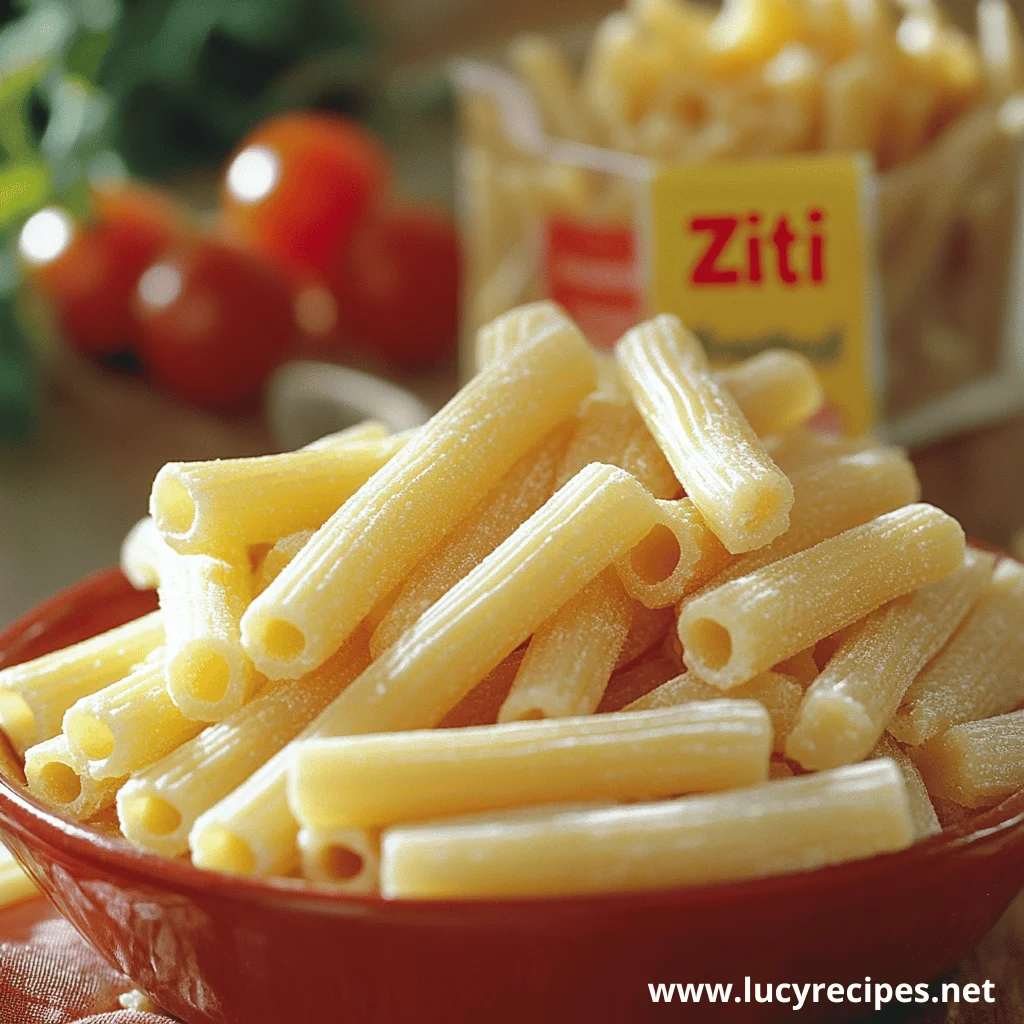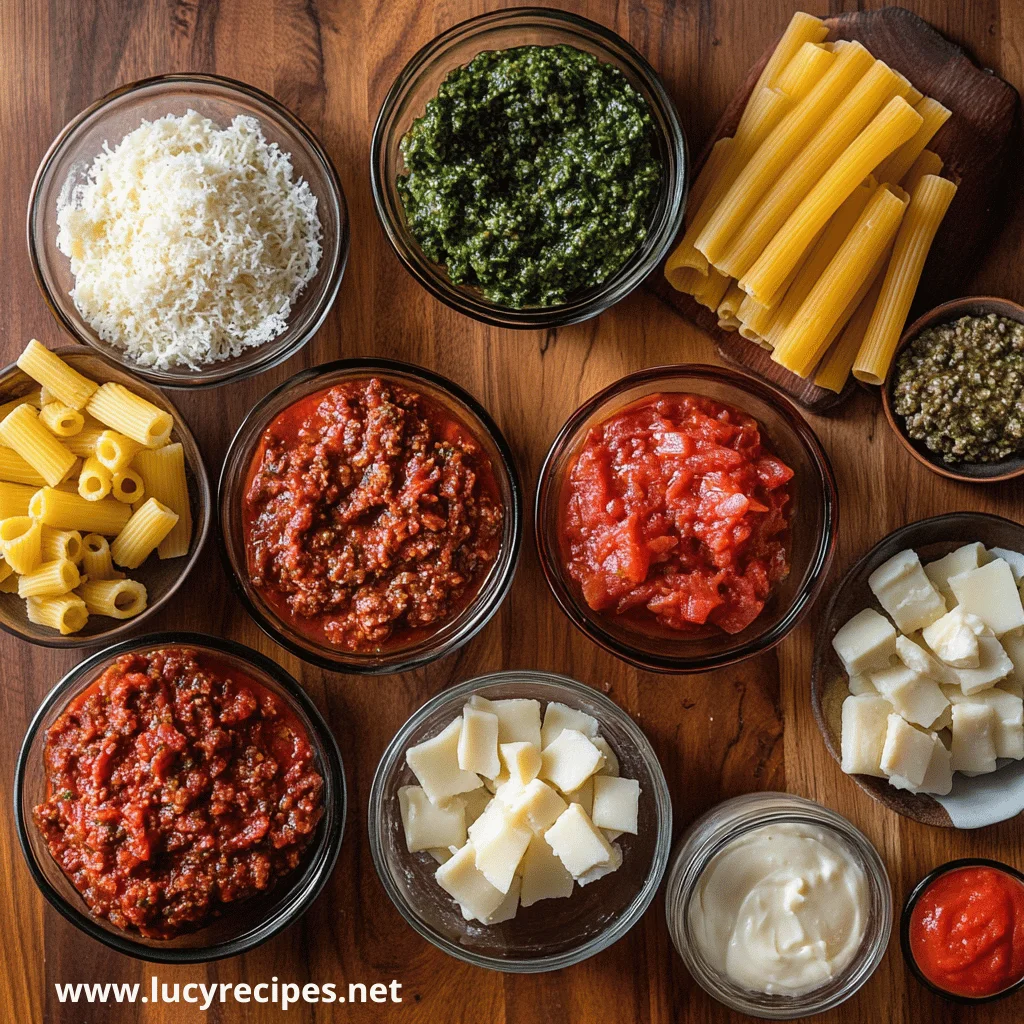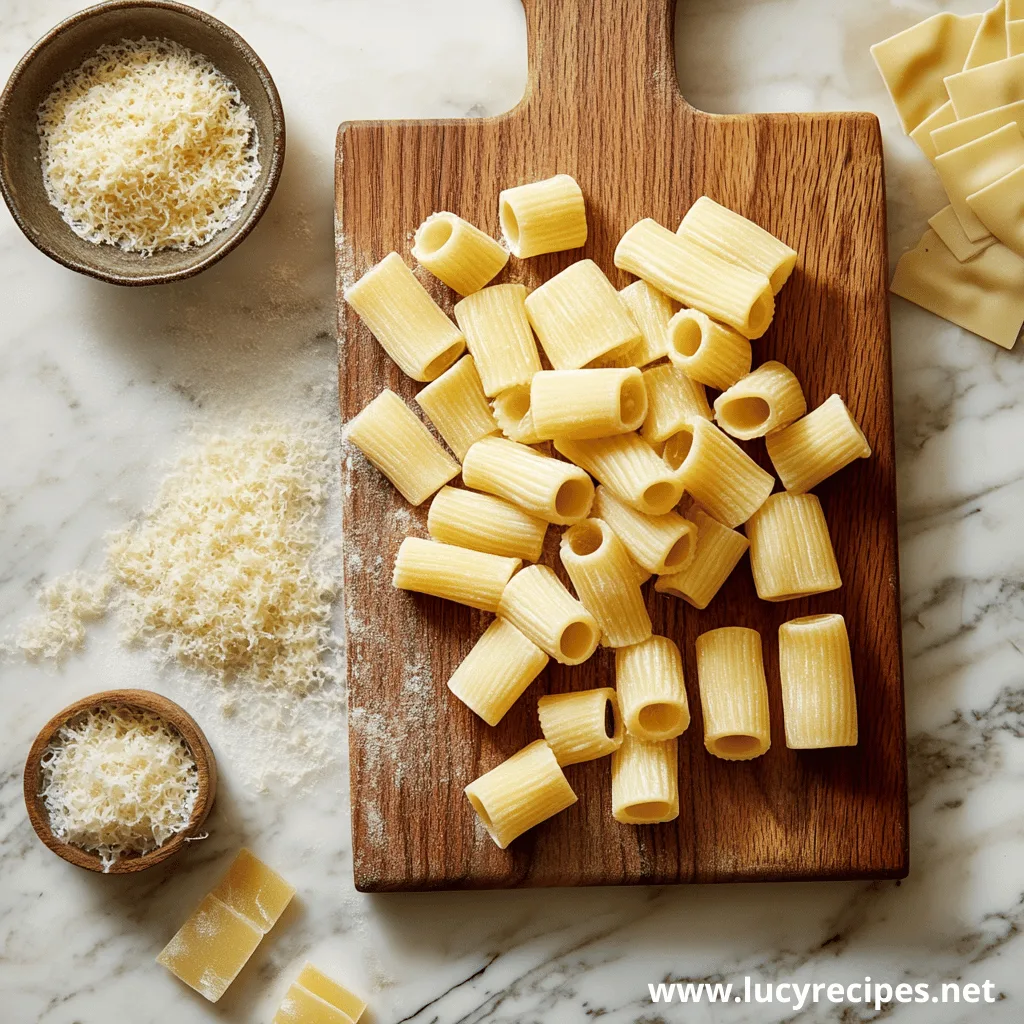Introduction
If you’ve ever wandered through the pasta aisle or dined at an Italian restaurant, chances are you’ve encountered ziti. This beloved pasta shape holds a special place in both traditional Italian and Italian-American cuisines. But have you ever paused to ask yourself: What is ziti short for? The answer lies in a fascinating blend of linguistics, culinary history, and cultural evolution. This article dives into the origins, significance, and enduring popularity of maccheroni, unraveling its role in the world of pasta.
Table of Contents
Understanding the Origin of the Word “Ziti”
The word ziti originates from the Italian language, specifically from the term zite, which loosely translates to “bride” or “fiancée.” This connection to weddings and celebrations is deeply rooted in the pasta’s traditional use at Italian nuptials. But What Is Ziti Short For in a broader linguistic context? Some experts suggest it’s an abbreviation of maccheroni di zite, meaning “bride’s pasta.”
The connection between ziti (or what we can called also maccheroni) and marriage ceremonies highlights how pasta is more than just a dish in Italian culture. Its etymology underscores the importance of food in marking life’s milestones, a tradition that continues to this day.
For more insights into traditional foods tied to celebrations, explore the perfect old-fashioned Thanksgiving dressing recipe for every holiday table.
A Culinary Perspective in Italian Cuisine
In traditional Italian cuisine, maccheroni is cherished for its versatility and compatibility with rich sauces. Its tubular shape and smooth surface make it ideal for hearty dishes that capture the essence of Italy’s diverse culinary heritage. But what is ziti short for when considering its culinary identity? It’s short for delicious simplicity.
Why Italians Love Ziti:
- Its hollow structure holds sauces, enhancing flavor with every bite.
- It pairs beautifully with baked dishes like ziti al forno.
- The pasta’s medium size makes it perfect for casseroles and soups.
Whether served with a classic tomato-based sauce or baked into a cheesy masterpiece, maccheroni continues to be a staple in Italian kitchens.
Try recreating an Italian classic with inspiration from Olive Garden baked ziti.
How “Ziti” Became Synonymous with Pasta Shapes

The name ziti has become nearly synonymous with specific pasta shapes, but why? Understanding what does ziti in this context reveals a broader story of adaptation and standardization in pasta-making. Traditionally, maccheroni referred to long, tubular pasta that needed to be broken by hand before cooking. Over time, the industrialization of pasta manufacturing standardized its shape into shorter, pre-cut tubes.
Today, the word ziti is often used interchangeably with similar shapes like penne or rigatoni, though each has subtle differences in texture and cooking applications. This evolution speaks to the global appeal of Italian pasta and its ability to adapt to modern culinary needs. To dive deeper into these pasta varieties, check out what is in the five-cheese ziti at Olive Garden.
Traditional Recipes Featuring Ziti
No discussion about maccheroni is truly complete unless we delve into its traditional recipes. For example, one of the most iconic dishes is baked maccheroni, which is a comforting casserole layered with pasta, marinara sauce, creamy ricotta cheese, and melted mozzarella. But what is ziti short for in these recipes? It’s shorthand for hearty, family-friendly meals.
Classic Ziti Dishes
- Baked Ziti: A layered casserole baked to golden perfection.
- Ziti alla Genovese: A savory dish with slow-cooked onions and beef.
- Ziti with Vodka Sauce: A creamy, tangy variation featuring tomato and cream.
These recipes showcase the adaptability of maccheroni, cementing its place in kitchens worldwide.
Curious about variations? Learn more about five-cheese ziti from Olive Garden.
Ziti vs. Other Types of Pasta
When comparing maccheroni to other types of pasta, its unique characteristics stand out. But how does it differ from penne, rigatoni, or macaroni? Understanding these distinctions can help answer the question, what does ziti in terms of pasta taxonomy.
Key Differences:
- Penne: Diagonally cut ends and a ridged surface distinguish penne from the smooth, straight tubes of maccheroni.
- Rigatoni: Larger and ridged, rigatoni is better suited for chunky sauces.
- Macaroni: Smaller and curved, macaroni serves different culinary purposes.
While maccheroni shares similarities with these pastas, its cultural and culinary context gives it a unique identity.
The Role of Ziti in Italian-American Culture

In Italian-American households, maccheroni is more than just a pasta—it’s a symbol of tradition and community. Dishes like baked maccheroni are not only staples at family gatherings, but they are also cherished at church potlucks and widely enjoyed during holiday celebrations. In this context, what is maccheroni? It serves as a shorthand for both comfort and nostalgia, bringing people together through its warm and familiar flavors.
Italian immigrants introduced maccheroni to the United States during the late 19th and early 20th centuries. Because of its affordability and versatility, it quickly became a go-to ingredient for feeding large families. Moreover, it soon established itself as a hallmark of Italian-American cuisine. Even today, maccheroni continues to bridge the gap between old-world traditions and new-world adaptations, maintaining its enduring appeal in kitchens across the country.
Etymology: The Linguistic Roots of “Ziti”
To fully understand what does ziti mean, we need to explore its linguistic roots. The word derives from the Neapolitan dialect, where zite specifically referred to a bride. Over time, the term was applied to the pasta served at weddings, symbolizing unity and prosperity.
The linguistic journey of maccheroni mirrors the evolution of Italian culture itself. From regional dialects to national and international cuisines, the word has carried its meaning and significance across borders.
Historical Significance of Ziti in Italian Celebrations
maccheroni holds a special place in Italian celebrations, especially weddings. Traditionally, pasta was a central component of festive meals, and maccheroni was often chosen for its symbolic connection to marriage. But what is ziti short for in these celebrations? It’s short for joy, unity, and shared experiences.
Cultural Context:
- Maccheroni was often served as the first course during wedding feasts.
- Its long tubes symbolized longevity and continuity in marriage.
- The pasta’s simplicity made it accessible for large gatherings.
Even today, maccheroni remains a popular choice for festive occasions, continuing its legacy as a dish that brings people together.
How Ziti is Made: An Insider Look at Pasta Production
Understanding how maccheroni is made begins with appreciating the craftsmanship behind pasta production. Traditionally, maccheroni is crafted from semolina flour, a coarse type of flour made from durum wheat. The flour is mixed with water to form a dough, which is then kneaded to the right consistency. Modern production often involves extrusion, where the dough is pushed through molds to achieve the tubular shape that defines maccheroni.
The key to perfect maccheroni lies in its texture. The pasta is dried at controlled temperatures to retain its structure while preserving its natural flavor. Drying times can vary depending on the manufacturer, but slow drying is preferred for premium quality. When asking, What does ziti mean? in terms of production, it’s a short answer to a long tradition of precision and care.
Popular Variations of Ziti Recipes Around the World
Ziti’s versatility has made it a global favorite, inspiring countless variations that reflect diverse culinary traditions. While its roots are firmly planted in Italian cuisine, chefs and home cooks worldwide have adapted this pasta to suit regional flavors and preferences. Here are some popular variations:
- Italian Baked Ziti: A quintessential comfort dish featuring layers of marinara, creamy ricotta, and gooey mozzarella, baked to golden perfection.
- American Ziti Salad: A refreshing cold pasta dish made with ziti, crisp vegetables, tangy vinaigrette, and fresh herbs—a perfect option for picnics and potlucks.
- Spicy Indian Ziti: A bold fusion dish combining ziti with aromatic curry spices, sautéed vegetables, and a touch of coconut milk for a creamy, spicy twist.
- Ziti Alfredo: A rich and indulgent variation made with a creamy white sauce, parmesan cheese, and a sprinkle of nutmeg for extra depth.
- Mediterranean Ziti: Tossed with olive oil, sun-dried tomatoes, olives, feta cheese, and fresh basil for a light and flavorful meal.
These variations highlight the adaptability of ziti, proving it to be a culinary canvas for creativity while maintaining its core identity as a comforting and satisfying pasta.
Ziti in Popular Media and Cultural References
maccheroni has appeared frequently in popular media, further solidifying its place in cultural consciousness. For instance, in many American TV shows and movies, baked maccheroni often serves as a shorthand for comfort food, symbolizing warmth and togetherness shared at family gatherings.
For instance, in the TV series The Sopranos, ziti often symbolizes tradition and family values, as it’s served during emotional or celebratory moments. This reinforces its identity as a dish tied to unity and warmth. Asking What does ziti mean? in cultural contexts might reveal an answer tied to nostalgia and community.
maccheroni’s frequent mentions in pop culture underscore its universal appeal and ability to evoke memories of togetherness.
Health Benefits and Nutritional Value of Ziti
While pasta is often associated with indulgence, ziti can be a nutritious addition to a balanced diet when prepared mindfully. Made primarily from durum wheat semolina, ziti is a source of essential nutrients and energy. Here are its key health benefits:
- Complex Carbohydrates: Ziti provides a steady release of energy, making it an excellent choice for maintaining stamina throughout the day.
- Protein Content: It contains a modest amount of protein, supporting muscle repair and growth, especially when paired with protein-rich sauces or toppings.
- Low in Fat: When prepared with light sauces and healthy ingredients, ziti can be a low-fat meal option.
- Rich in Iron and B Vitamins: These nutrients are essential for metabolic processes and overall cellular health.
- High in Fiber (Whole-Grain Varieties): Whole-grain ziti options are particularly beneficial for digestion and can help support heart health.
To maximize its nutritional value, pair ziti with nutrient-dense ingredients like fresh vegetables, lean proteins, and olive oil. By choosing whole-grain varieties or gluten-free alternatives, you can cater to specific dietary needs while still enjoying this beloved pasta.
In moderation and as part of a balanced diet, ziti is not just a treat for the taste buds but also a nourishing choice for your body.
Cooking Tips: Getting the Perfect Al Dente
Achieving perfectly cooked maccheroni requires attention to detail. Al dente, which translates to “to the tooth,” is the ideal texture for pasta—firm yet tender.
Tips for Cooking:
- Use Plenty of Water: Ensure the pasta cooks evenly and doesn’t stick.
- Salt Generously: This enhances the pasta’s flavor.
- Monitor Cooking Time: Follow the package instructions but start tasting a minute early.
- Rinse Sparingly: Only rinse if the recipe calls for cold pasta.
The keyphrase What does ziti mean? may find its answer here: perfection in simplicity, achieved with care.
Pairing with Sauces: The Best Combinations

Ziti’s tubular shape and smooth surface make it an excellent pasta for capturing and holding sauces, ensuring every bite is flavorful and satisfying. Its versatility allows it to pair beautifully with a wide variety of sauces, from rich and hearty to light and refreshing. Here are some of the best combinations:
- Marinara Sauce: A classic pairing that highlights the simplicity and brightness of tomatoes, garlic, and herbs. Perfect for baked ziti or simple weeknight dinners.
- Bolognese: This meaty, slow-cooked sauce clings to ziti’s hollow structure, creating a hearty and comforting dish.
- Alfredo Sauce: A creamy, indulgent option made with butter, cream, and parmesan cheese, ideal for special occasions or when craving something rich.
- Pesto Sauce: Fresh, herbaceous, and nutty, pesto coats ziti beautifully and offers a lighter, aromatic alternative to tomato-based sauces.
- Vodka Sauce: A creamy tomato-based sauce with a touch of vodka for depth and balance, delivering a tangy, velvety finish.
- Cheese Sauces: Ziti’s sturdy structure makes it perfect for baked dishes loaded with melted cheese blends, such as ricotta, mozzarella, and parmesan.
When selecting a sauce, consider the occasion and desired flavor profile. Ziti’s versatility ensures it can adapt to almost any culinary vision, from traditional Italian recipes to modern, creative dishes. For best results, pair ziti with sauces that complement its shape and enhance its comforting texture.
FAQs
What is ziti short for?
The name ziti comes from the Italian word zite, meaning “bride,” because it was traditionally served at weddings.
How does ziti differ from penne?
It features a smooth surface and straight edges, while penne showcases ridges and diagonal cuts.
Can it be gluten-free?
Yes, many brands offer gluten-free made from rice or corn flour.
What are common substitutes for ziti?
You can use penne, rigatoni, and macaroni as alternatives, though they have distinct textures.
Conclusion
From its production process to its cultural and culinary significance, ziti is a pasta with a rich story to tell. The question, What does ziti mean?, leads us through a journey of tradition, adaptability, and global appeal. Whether you savor it in a classic Italian dish or explore creative recipes, maccheroni remains a timeless symbol of comfort and community.

